Key takeaways:
- Going solo in music fosters self-discovery, creativity, and vulnerability, allowing for deeper connections with listeners.
- Solo metal artists face unique challenges such as marketing themselves and handling the emotional toll of isolation without bandmates.
- Key lessons from a solo journey include the importance of self-discipline, embracing vulnerability in songwriting, and celebrating small milestones.
- Strategies for successful solo performances involve meticulous setlist planning, audience engagement through storytelling, and maintaining strong stage presence.
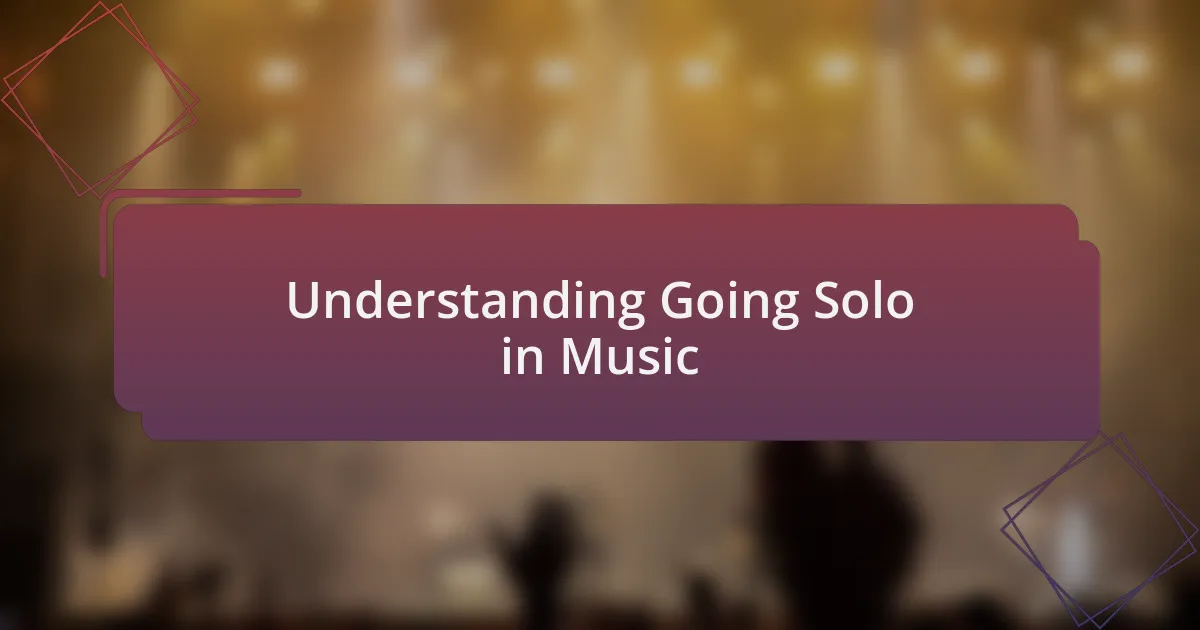
Understanding Going Solo in Music
Going solo in music is often a journey of self-discovery. When I first took the plunge, I felt a surge of excitement mixed with apprehension. How would my sound evolve without a band to shape it? I soon learned that the solitude pushed me to explore new musical styles and experiment with my creativity in ways I never thought possible.
The transition from being part of a band to a solo artist can be both liberating and daunting. I remember writing my first solo song; it felt raw and exposed, as if I was laying my soul bare for the world to see. This vulnerability can be intimidating—who hasn’t worried about how their personal story will resonate with others? But it also leads to a profound connection with listeners who relate to those genuine emotions.
Navigating the solo landscape also means taking full ownership of your work. I experienced moments of doubt, especially when decisions weighed solely on my shoulders, making me question my direction. Yet, those challenges were pivotal; they taught me resilience and the importance of trusting my instincts. What’s your take on the balance between collaboration and individual artistry? Exploring that tension is key to understanding the solo experience in music.
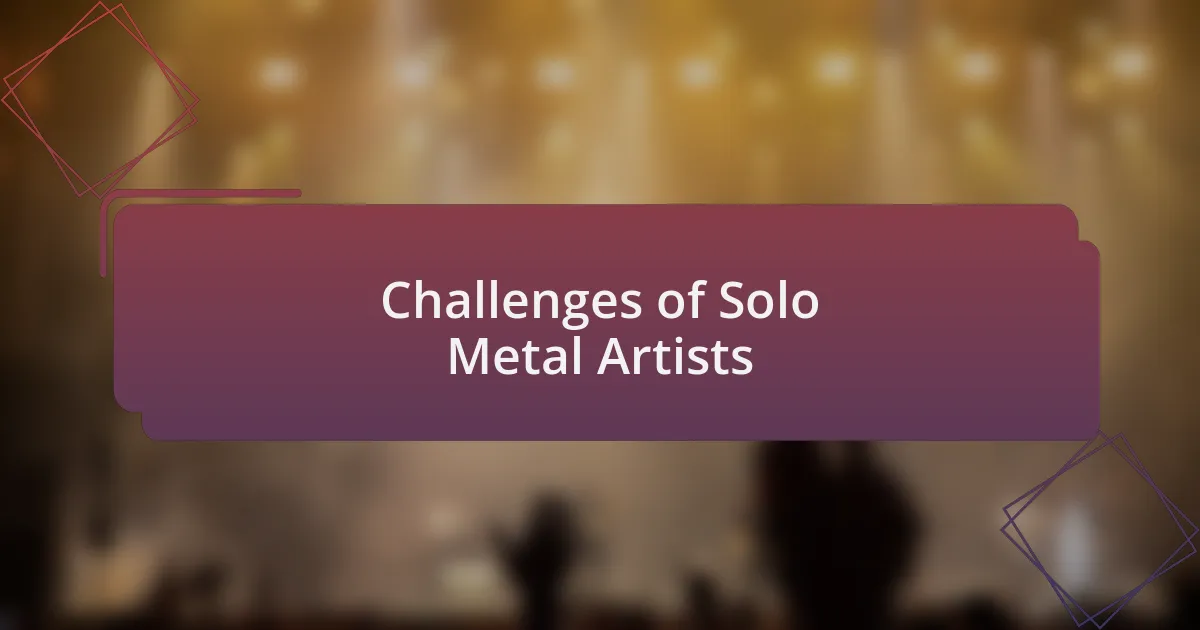
Challenges of Solo Metal Artists
Solo metal artists face a unique set of challenges that can sometimes feel overwhelming. For instance, I remember the difficulty of learning not just how to write and perform metal, but also how to market myself. It wasn’t just about shredding solos; I had to dive into social media promotions and networking, which often left me feeling out of my comfort zone.
Another significant hurdle is the absence of immediate feedback from bandmates. I once spent weeks perfecting a track only to realize later that the lack of collaboration led to a product I wasn’t entirely happy with. Without a team to bounce ideas off, the journey can feel solitary and fraught with uncertainty. How does one ensure that their vision doesn’t get lost in the isolation?
Lastly, there’s the emotional toll that comes with going solo. I often found myself grappling with loneliness during late-night songwriting sessions when I craved that camaraderie. This isolation can be bittersweet; while it fuels my creativity, it can also lead to self-doubt, especially when I’m creating something personal. Have you ever felt that creative freedom was accompanied by a heavy burden? That duality is something that every solo artist must navigate.
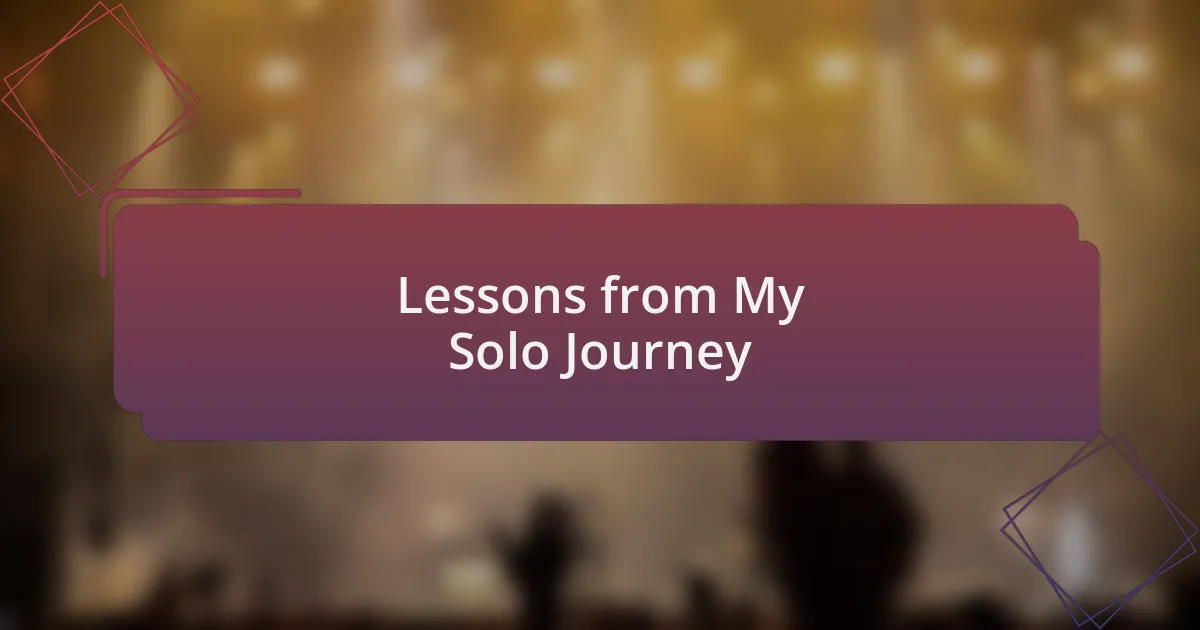
Lessons from My Solo Journey
Lessons from My Solo Journey
One of the most profound lessons I learned was the importance of self-discipline. When I didn’t have a band to hold me accountable, I had to develop a routine that kept me inspired and productive. I vividly remember mornings where I would wake up and force myself to play even when inspiration was failing me—pushing through that resistance brought a surprising payoff in the end. How often do we wait for the “perfect moment” to create, rather than just diving in?
Another revelation was embracing vulnerability in my songwriting. Going solo allowed me to explore themes and emotions that were deeply personal to me. There was a track I wrote after a particularly challenging breakup, pouring my heart into every lyric. That raw honesty not only resonated with listeners but also strengthened my connection to my own artistry. Have you ever found freedom in expressing what truly weighs on your heart?
Lastly, I’ve come to appreciate the beauty of patience. Creating music alone demands a different kind of persistence, and I learned to celebrate small milestones. One late night, after weeks of refining a song, I finally got it right—and it felt like a monumental victory. Each step forward, no matter how tiny, taught me that success in this journey isn’t always about speed; sometimes, it’s the slow, steady progress that leads to lasting impact. Isn’t it fascinating how growth often happens in unexpected ways?
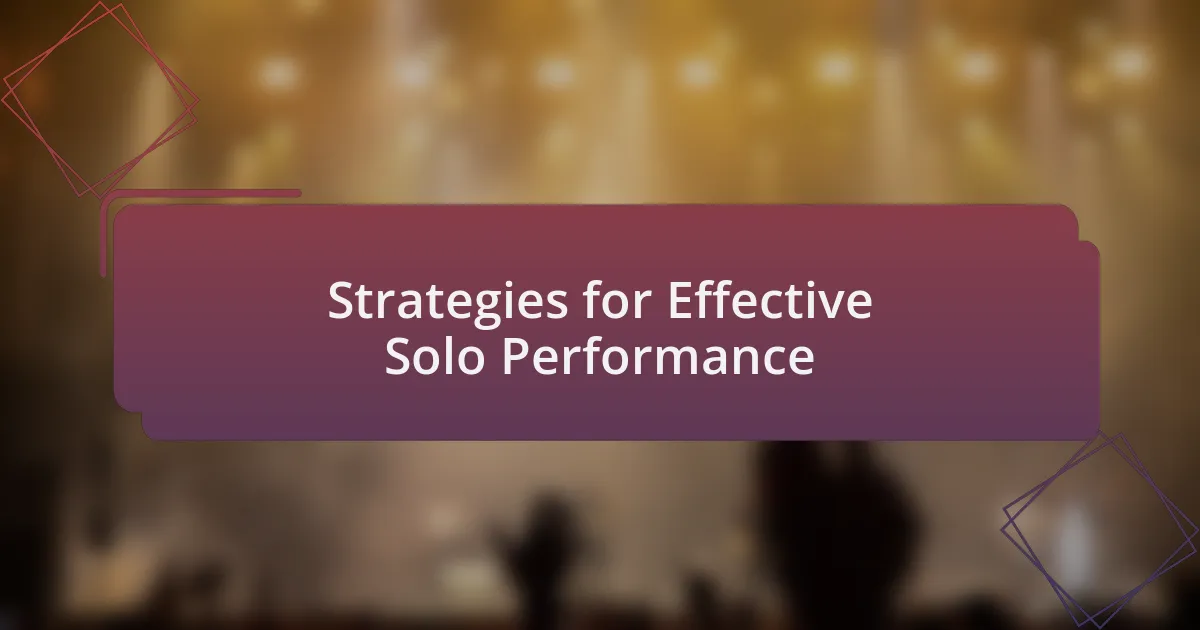
Strategies for Effective Solo Performance
Embarking on a solo performance journey means developing a strong set of strategies. One effective approach I found was to meticulously plan my setlist ahead of each show. I would spend hours contemplating the emotional flow of each song, ensuring that the transitions felt natural. I remember a performance where I carefully sequenced my tracks to take the audience on an emotional rollercoaster. The feedback was overwhelming, and it made me wonder—how much can the right order of songs enhance the overall experience?
Another key strategy is to practice performance techniques that engage the audience. I often use storytelling between songs to create a connection. At one gig, I shared the backstory of a song while glancing at the faces in the crowd, watching them nod and smile—it was powerful. This made me realize that a solo act isn’t just about the music; it’s about forming a bond with the audience. How do you think sharing personal anecdotes affects the atmosphere of a live show?
Lastly, I’ve learned the importance of stage presence. Having the confidence to move around and interact can transform a performance. During one memorable show, I decided to step down from the stage and sing among the audience. The energy was electric, and I could feel the excitement as they joined in. It sparked a thought in me: isn’t it amazing how breaking down barriers can create such a deeper connection? Each of these strategies has shaped my performances, turning solo gigs into experiences that resonate long after the final note.
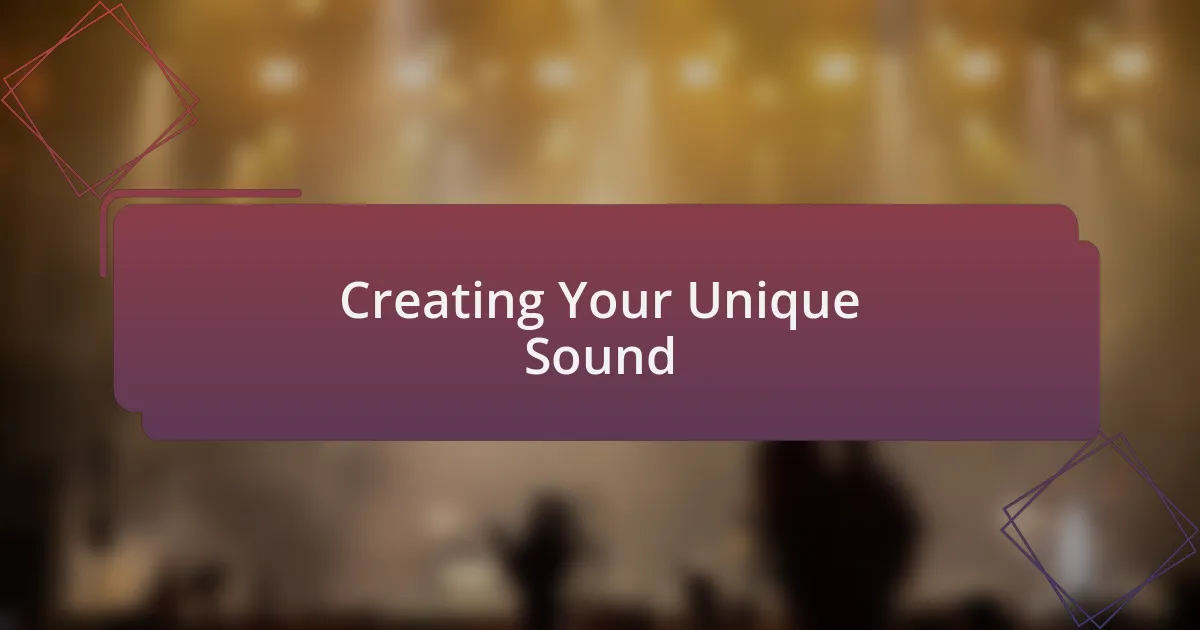
Creating Your Unique Sound
Creating a unique sound is a personal journey that requires a deep understanding of your influences and what resonates with you. I remember delving into different genres and discovering how blending elements of metal with folk melodies added a depth I hadn’t expected. As I experimented with this fusion, it became clear—what if my sound was a reflection of my varied musical tastes?
I’ve also found that incorporating distinctive instruments can set you apart. For instance, adding an unconventional element like a violin to a heavy guitar riff can create something truly memorable. During one of my songwriting sessions, I introduced this idea, and it sparked a rush of creativity—almost like unlocking a new dimension of my identity as an artist. Have you ever felt that thrill when experimenting pushes your boundaries?
Understanding your lyrical themes can also contribute to your unique sound. My lyrics often draw from personal struggles, making each song a cathartic release. One night, as I performed a deeply personal track, I saw tears in the audience’s eyes; it struck me how vulnerability in lyrics can evoke powerful connections. Isn’t it fascinating how sharing your truth can resonate with others and define your sonic identity?
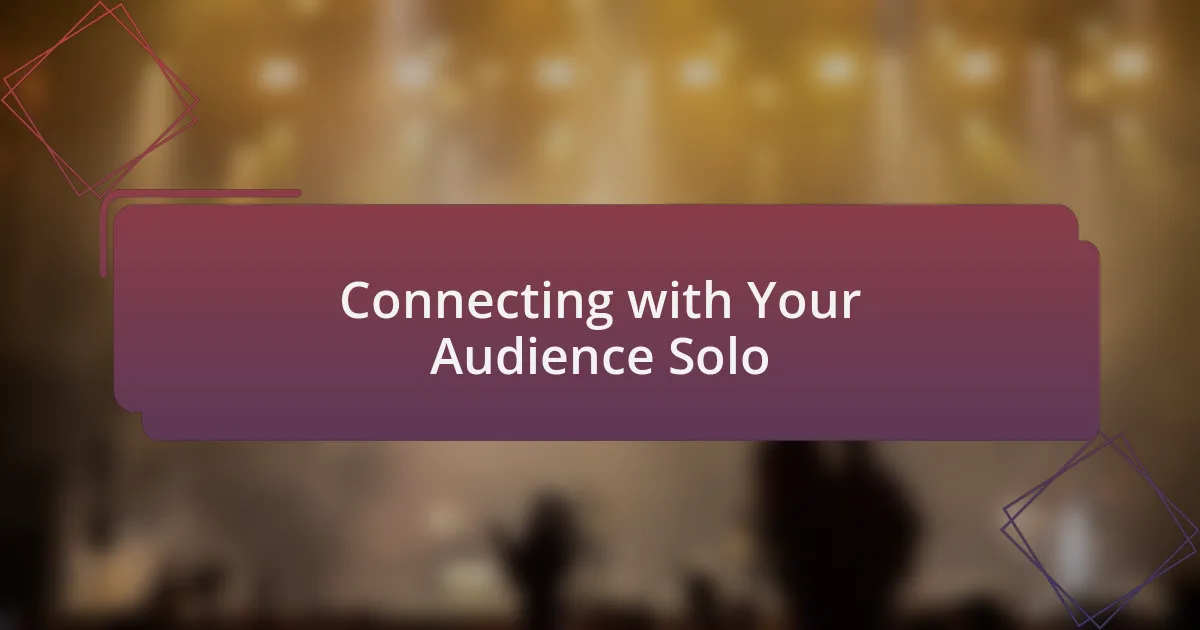
Connecting with Your Audience Solo
Connecting with your audience when you’re performing solo can feel both exhilarating and daunting. I remember my first solo gig; the room was packed, and as I strummed the first chord, I felt a wave of vulnerability wash over me. It was in that moment I realized that making eye contact with my audience transformed my performance—each gaze felt like a thread weaving us together, creating an unspoken bond.
As I navigated through my set, I began to share stories behind the songs. One track was inspired by a struggle I faced during a tough time in my life. When I opened up, I noticed heads nodding and smiles appearing in the crowd. It dawned on me that honesty creates a connection far deeper than simply playing notes. Have you ever shared a personal story during a performance that made you feel more connected to the audience?
Engagement goes beyond just the music; it involves inviting listeners into your world. I started asking the audience questions in between songs—simple stuff like “What’s your favorite live band?” or “Anyone else feeling the lyrics?” These small interactions sparked laughter and cheers, making the performance feel like a conversation rather than a one-sided show. It was a revelation to see how a little vulnerability and openness could turn a solo act into a collective experience.